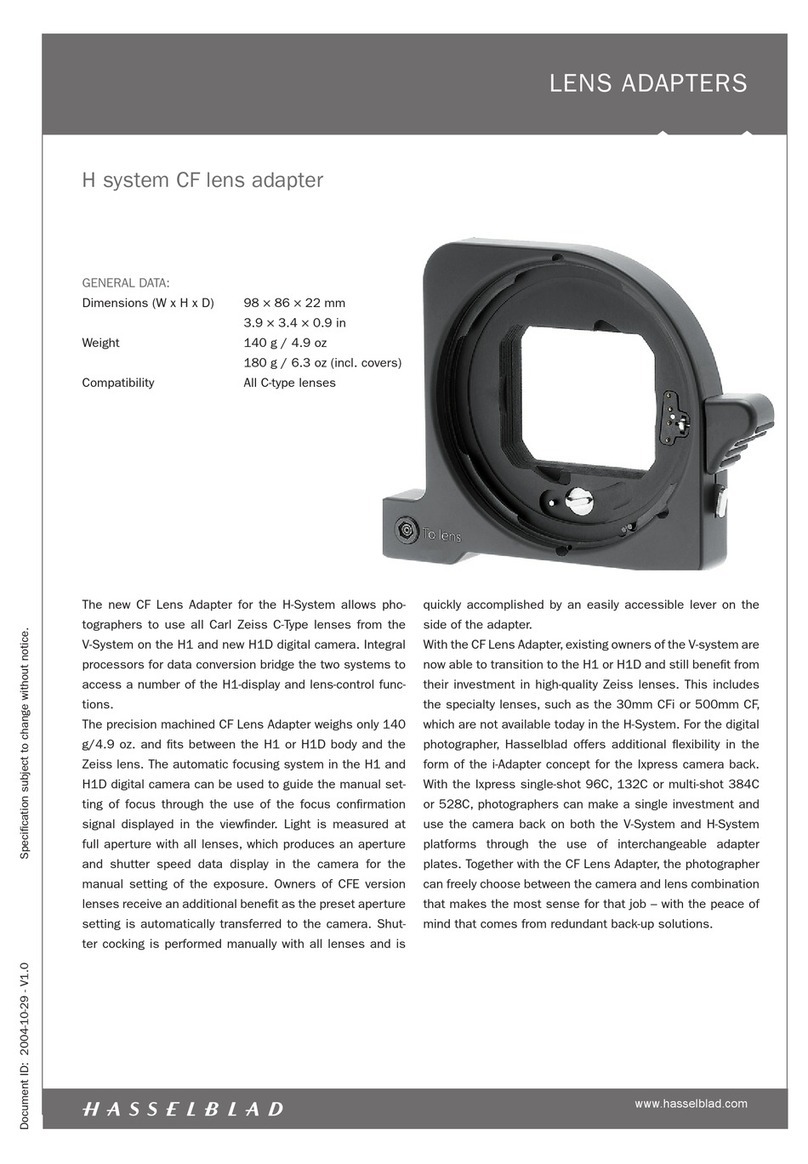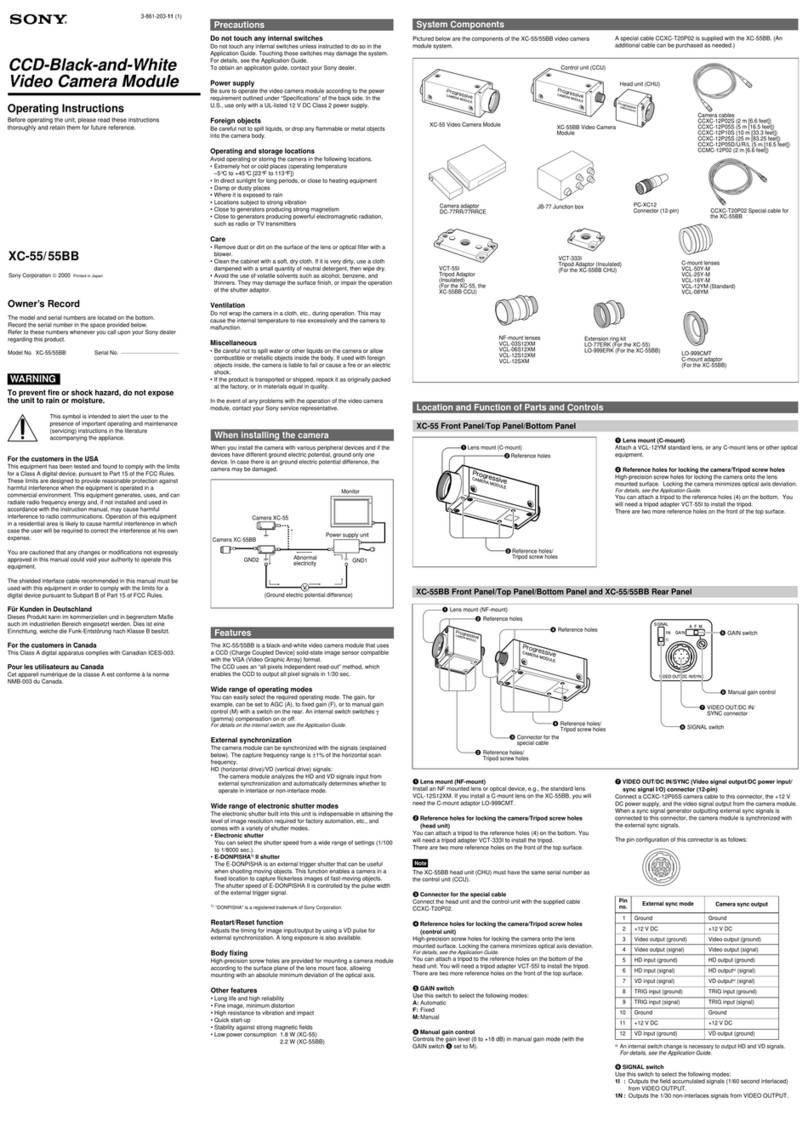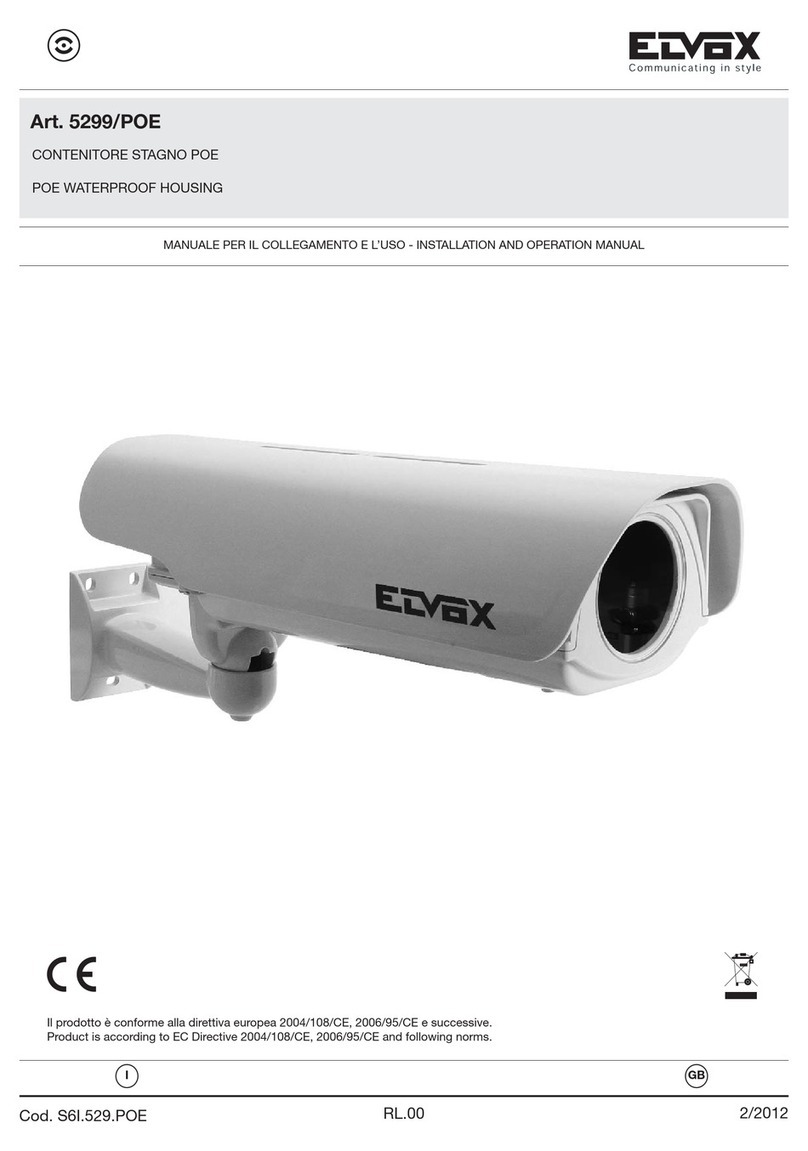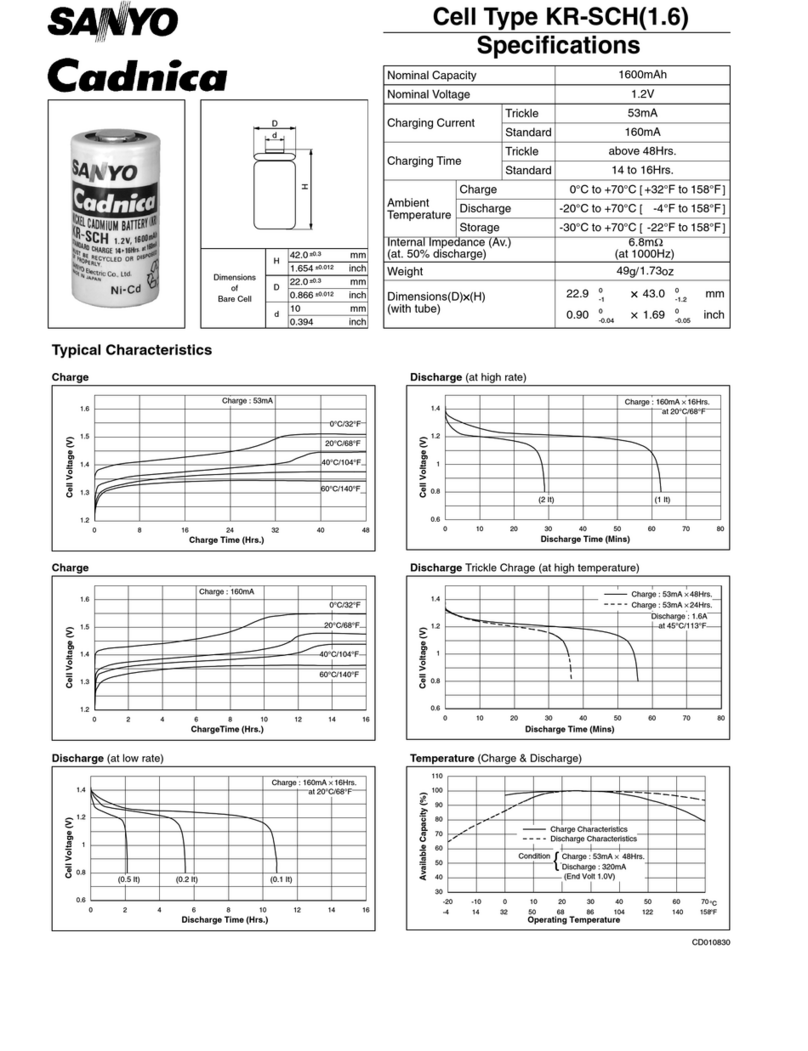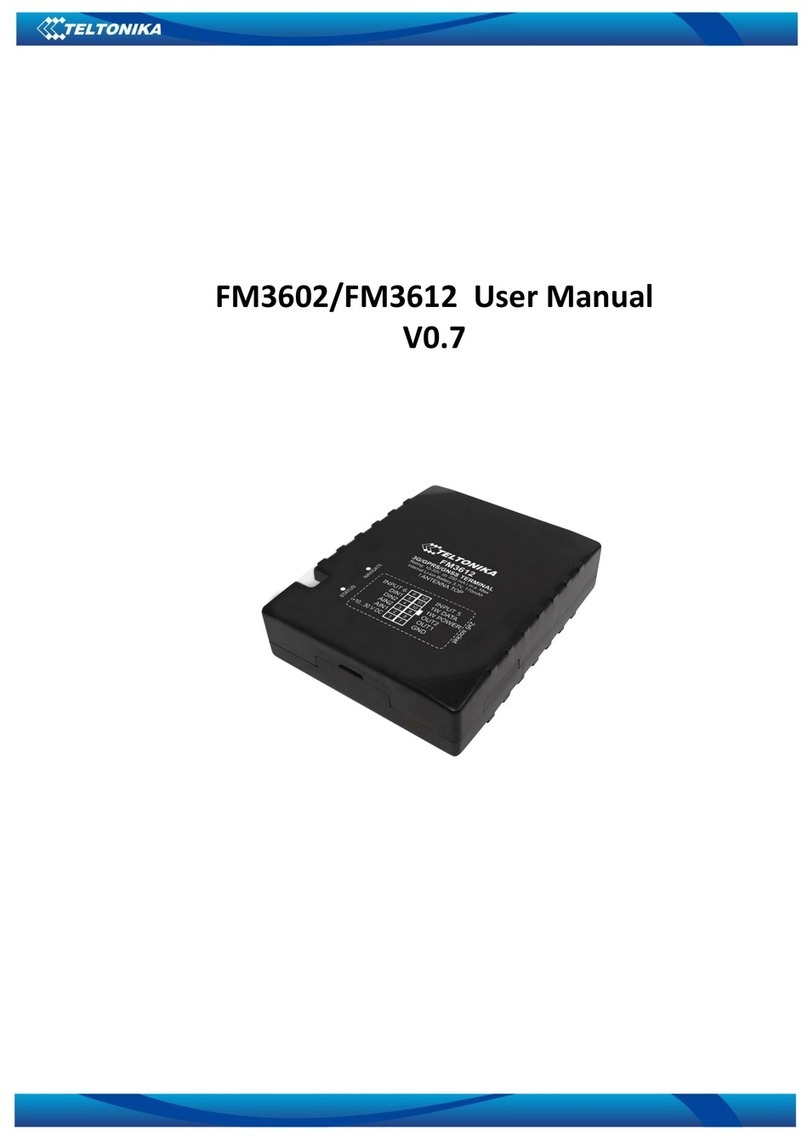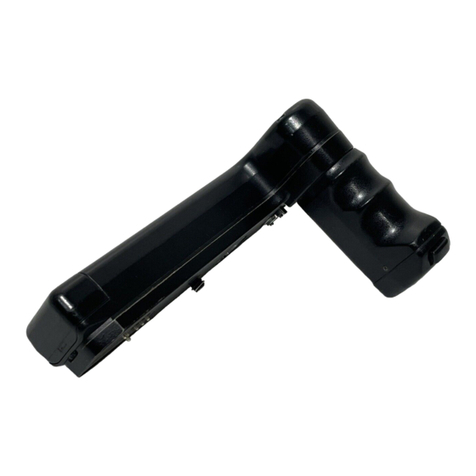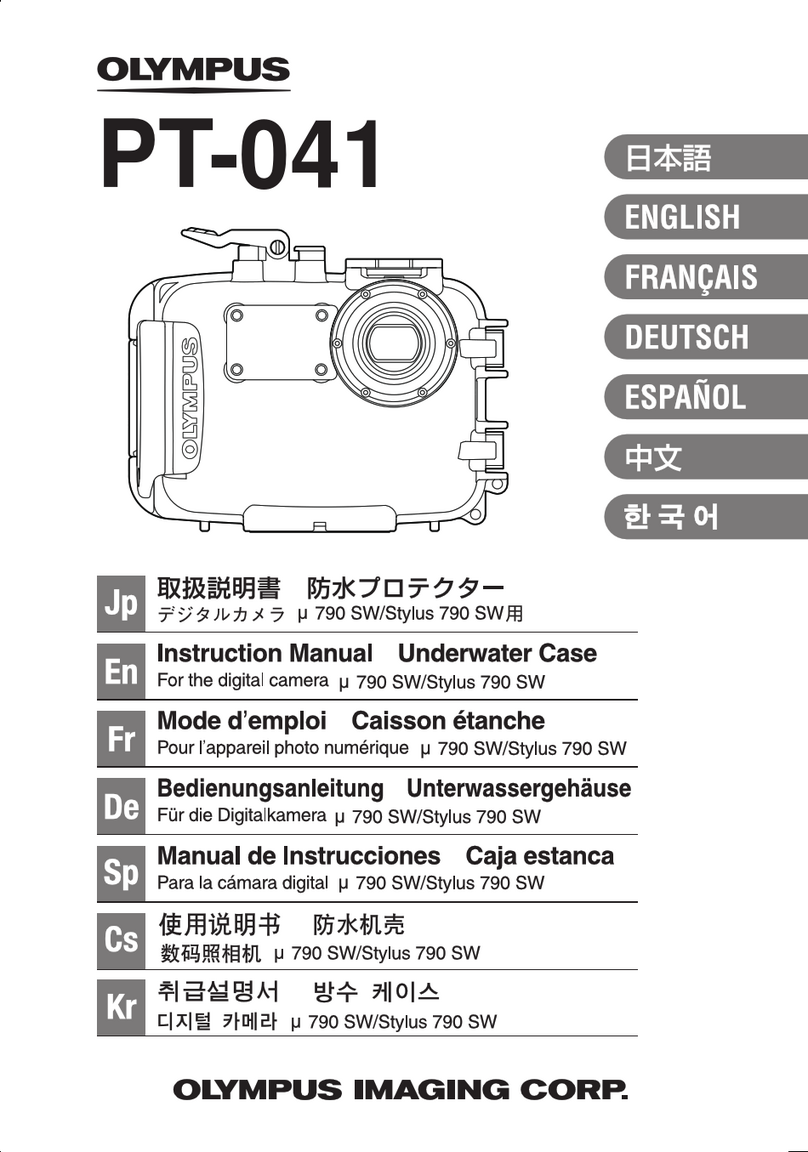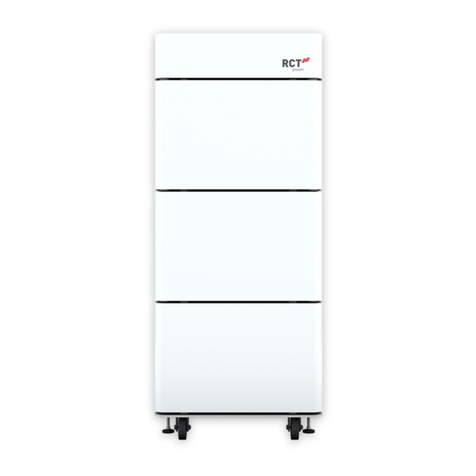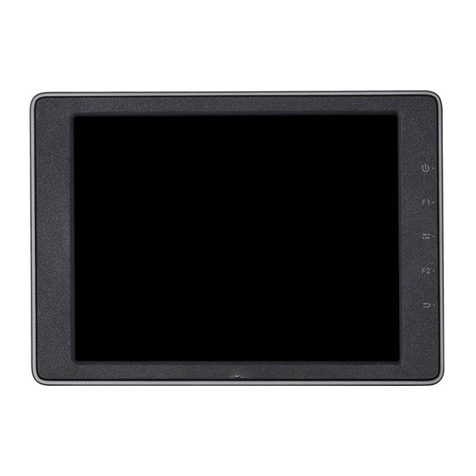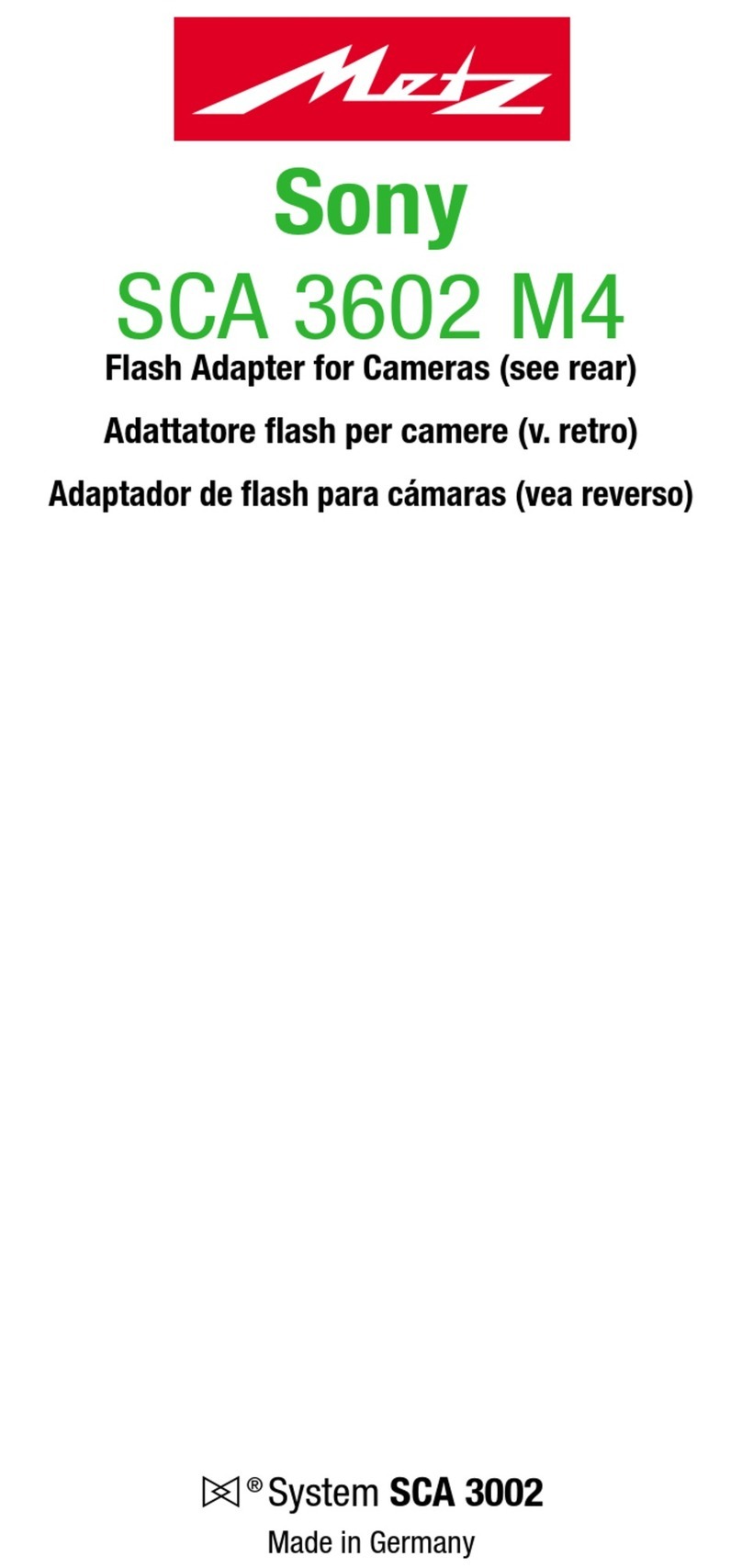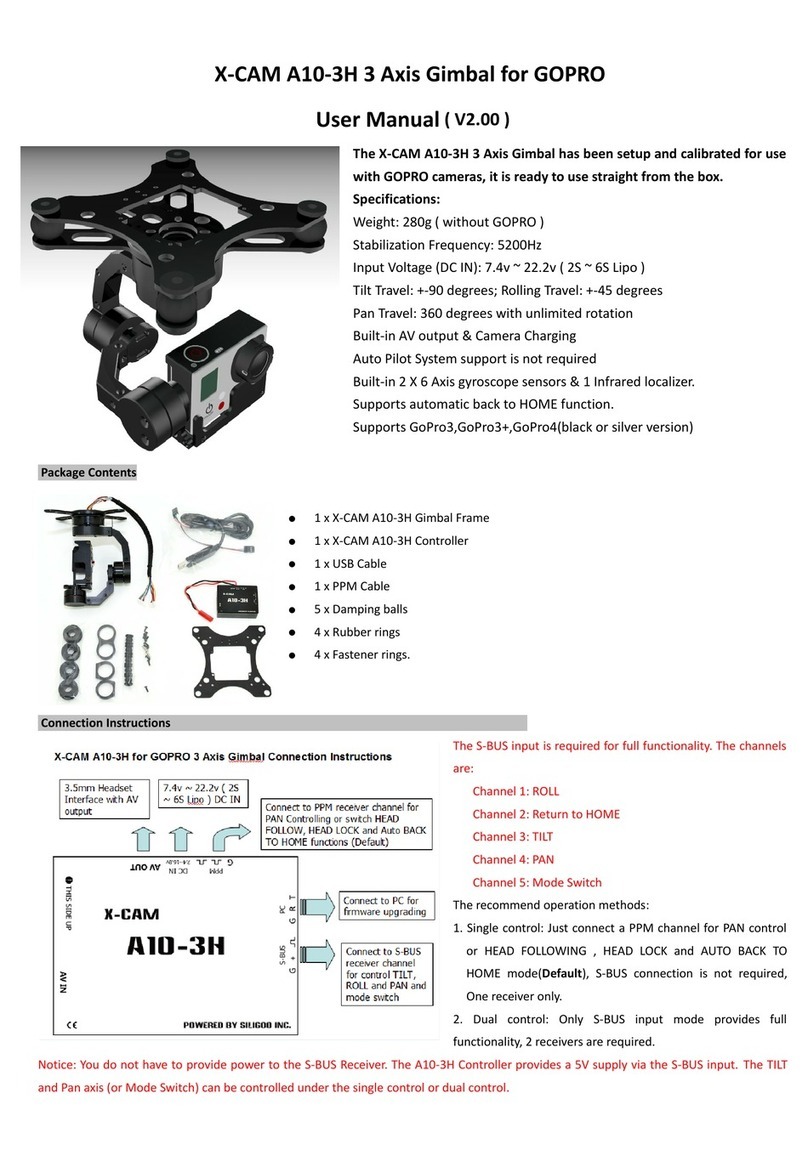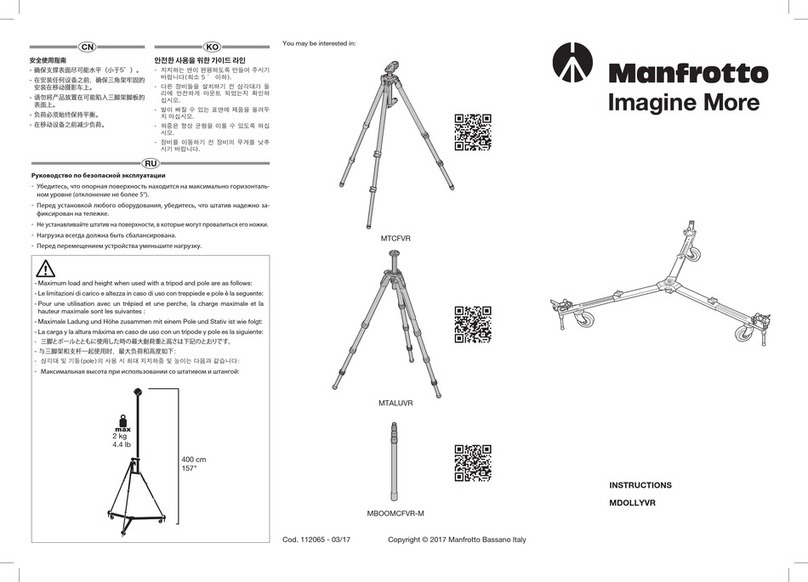Betz RIG HD User manual

betz-tools.com
RIG
HD
Manual

”STAGE”
Fore/aft and side-to-side camera balance can be adjusted
via the marked knurled knobs on both side.
The stage guides run on precision-machined rods in special
non-metalic bearings. These bearings should not be oiled or
greased.
The forward-facing 15 mm rods are for attachment of a
lens-control receiver or additional accessories, and can be
unscrewed for transport.
On the stage rear is a mechanical bubble level which
serves as zero reference to adjust the built-in electronic
bubble level in the „Junction-Box“, which is displayed
in the monitor. Please be shure that the monitor will display
bubble level.

Attach camera with mounted dovetail plate from above.
Make sure that the clamp lever on the stage faces to the rear
(A) so that the clamping is open.
After the camera snaps in, the clamp lever comes into a
middle position and the safety pin (B) springs up.
The camera is now protected against sliding out.
By pulling the clamp lever towards stage rear, approximate
fore/aft balance can now be achieved by sliding of the
camera in the stage.
The clamping lever should lock the camera even before
being pressed to the nal stop! In case the camera can still
be moved even though the lever is pressed until stop,
a spacer of approx. 0,1 mm has to be put under
the compensation track (C) under the cover plate.
To remove the camera, the dovetail clamp must be opened by
pulling the clamp lever fully to stage rear. In order to do this,
you will have to press down the safety pin (A).
Important! The screw (B) under the cover plate which xes the
clamping lever must never be unscrewed, this could damage
the mechanism. Should this screw be loosened accidentally, it
should be secured with Loctite 603.
Maintenance: The locking mechanism should be
treated/cleaned occasionally with a resinless oil (e.g. gun oil).
Mounting the Camera ”SAFETY LOCK”
A
B
C

Each sockets supply voltage is indicated with engraved color-
coding. Connector arrangement to battery is shown on the
respective battery conguration layout (RIG-Low) .
Tally on (Camera GND) works only with the battery cong
plug for two batteries !!
Frontside
Rearside
The two HD-SDI Video in/out connectors are wired directly
with the connectors at the lower sled.
The four-pin Lemo and the BNC Video in/output are connected
in one coaxial cable that runs to the lower sled.
Use of the linelaser please see ”Sled Low”.
Junction Box ”J-BOX”
+12V
GND
sold. side connector
Lemo 1B 303
Tally +12V
GND
sold. side connector
Lemo 1B 303
HD-SDI Video
BNC isolated
+12V
GND
sold. side connector
Lemo 1B 303
+24V +12V
GND
sold. side connector
Lemo 1B 303
Video
Analog Video Gnd
BNC isolated sold. side connector
Lemo 0B 304
AnalogVideo Gnd
Analog Video+12V
Gnd 12V
Tally

Electronic Bubble-Level
The bubble-level‘s position sensor and digital electronics are
completely integrated in the “J-Box“. This allows for
uninterrupted direct reference to the camera horizon.
The bubble level is displayed in the monitor screen (only in use
with Sunbird / Pro monitors or Transvideo HD monitors with
special software). The Bubble-Level keeps its settings even
without power and remains valid for both „high“ and “low
mode“ operation. When switching between“high“ and “low
mode“, it is only necessary to re-zero by pressing “zero“.
Display Zero Position
Position the RIG to zero with the help of the built-in mechanical
bubble level on the backside of the stage. Now press “Zero“ (A)
for approx. 2 seconds. If the bubble don‘t cover the center mark
adjust as follows. Press “Zero“ (A) for approx. 10 seconds then
push “+“ or “-“ to cover the marks. Push “ “ (D) to get back
in the working mode. Attention PRO monitor user!
Set always level “zero“ on the monitor by pressing “offset“!
If the bubble don‘t cover the center mark after setting,
you have to adjust rst the level in the monitor menu:
select “Level“ go to “set ref. position“ adjust to zero.
go to “level gain“ adjust to max. -4
Display Direction Reversal
Press “direction“ (B) for 2 seconds, after releasing the
button the display direction is reversed.
A B C D

Level Sensitivity
Sensitivity can be adjusted in 5 steps. After pressing “Speed“ (C)
the monitor display mark goes to the presently adjusted level.
Left Nearly no damping
Middle Maximum damping
Additional pressing of the keys “+“ or “-“ adjusts the damping,
the selected value will be displayed and stored after release of
the respective button.
Display Angle
The display`s horizon-inclination range can be adjusted in ve
steps. After pressing “ “ (D) the monitor display mark goes to
the presently adjusted angle.
Left +/- 3° full scale
+/- 6° full scale
+/- 11° full scale
+/- 23° full scale
Middle +/- 90° full scale
Additional pressing of the keys “+“ or “-“ adjusts the angle, the
selected value will be displayed and stored after release
of the respective button.
Electronic Bubble-Level
BCD

Removing ”STAGE /J-BOX”
Position the stage so that all four screws (A) can be loosened
from above, remove stage.
Loosen the screw (D) from the docking ring
using a 3-mm allen wrench.
Loosen the 4 socket head cap screws (B) with a 4-mm
allen wrench, remove (unplug) the J-Box upwards.
When attaching the J-Box, make sure that the pin of the plug
(C) ts into the socket to avoid damage to the connector.
A
B
C
D

”Gimbal”
The gimbal is absolutely maintenance-free and has no
friction on any of the three axes. However, if the stainless steel
gimbal bearings become contaminated, they should be cleaned
and oiled.
Caution ! The gimbal bearings should only be oiled with one
drop of the special “RIG Gimbaloil“ otherwise, there may be
friction in the rolling elements. Maintenance of the gimbal
requires it to be removed from the post.
The clearance hole in the handle allows for use of a
ball-lock-quick-release pin when in “Low Mode“
Never dock the RIG with the gimbal directly on the
docking bracket. The bearing races will be damaged.
Always use the upper or lower “Docking ring“.

Post
The telescopic post can be extended in four increments.
Each post segment is marked to show the maximum
extension limit.
“CAUTION LIMIT“ The mark shows the maximum safe
extension limit; past this mark, the post tubes may slide out
(or slip), even while clamped.
For “Low mode“ operation an additional lock has to be
attached to the camera.
Caution!
When adjusting the post (extension or retraction of post
segments), hold both adjusted post segments rmly with both
hands; the spiral cable in the post could exert tension and pull
the segments together unexpectedly, causing injury.
Release the post segments only when the respective clamp has
been locked. It can occur, that the post cannot be pushed back
to its minimum length. This is due to turning the post segments
against each other too often. In order to solve the problem,
simply open the clamp and twist the upper segment clockwise
as many times as necessary until the segment can be pushed
back completely again.

Adjustment of Post Clamps
Adjust the allen screws with a 2 mm allen wrench (A);
after adjusting one, adjust the other (B) until the lever
is aligned with the ring.
Check the clamping force by opening and closing the clamp.
Caution:
Adjustment should only be performed with the clamping in
“locked“ position. Do not overclamp the clamp insert (C)
could be damaged.
If the allen screws become loose, they should be xed with
Loctite 243 (this number differs by country; it is the Loctite
blue threadlocker).
A
B
C

Sled Low ”RIG LOW/BASE”
For extra bottom clearance, the battery mounts can be
turned upside down.
To remove the battery mounts from the rods, proceed
as follows:
Left index nger on left push button,
right index nger on right push button.
Push the buttons simultaneously
and take off the mount by exerting a counter pressure
to the rods with your thumbs.
Turn around battery mount, press buttons and push battery-
mount back on the rods. The single battery mount in front
is attached upside down to the small rods which contain
the 3pin respectively the 8pin connectors.
The engraving battery A/B for the power switches is now
reversed (see engraving battery mounts).
The front battery mount can be removed completely,
according to use of the battery conguration plug.

Power switches - Fuses
The lower part of the RIG “base“ serves as camera
counter-balance as well as a power distributor
for the system.
The three circuit breakers (B) serve as a main switch for battery
voltages A/B or C, and also as fusing . (10 Amp.)
If the breaker trips in case of short-circuit or overcurrent,
it can be pushed back in for reset.
Dynamic balance (shift during rotational moves) can be
adjusted motorised via switch (C) or manualy via the knobs (A)
which adjust battery mount position on the lower rods.
A
B
c

3 Batteries 12/24 Volt (Standard)
2 Batteries 12/24 Volt (Opt.)
Battery-Congurations
A
B
The battery conguration plug (A) in combination with
the 12-24V switch (B) enable a most varied interconnection
of the batteries.
The system can be operated with two, three or even only
one battery.
24V
12V switch
24V
12V switch
2 Batt.

Batterie Display / Linelaser / setup
The battery capacity is displayed in levels of 10%.
Attention:
When using NIMH- or L-ion batteries display can show
wrong datas.
NICAD batteries will display properly with their
characteristic curves.
The integrated switchable linelaser which is built in the
”J-Box” is used for the correct adjustment from the
lower sled part to sled top part. The reference marks next to
the battery display are to line up.
The marks from the linelaser on the oor can be used as
reference marks while shooting.
Referencemarks
Referencemarks
Laserline

Connector pin out
+12V
-12V
-12V
-12V
+12V
+12V
Betz-tools RAK BU 4P
soldering side connector
Betz-tools RAK BU 4P
soldering side connector
Lemo 1B 303
soldering side connector
+12V
+24V
GND
Accessories
Lemo 0B 304
soldering side connector
+12V
GND
Analog Video
Analog Video GND
Video/Acc.
Batteries
Batteries
Lemo 1B 308
soldering side connector
Analog Video GND
Analog Video
Tally
AnalogLevel
+12V
GND
Monitor
Digital Level RX
Digital Level TX
HD-SDI Video
in/out
Motor - sled
for/aft

Accessory Adapters
There are 2 different adapters available at present to attach
accessories to the lower sled.
An adapter with dovetail (A) which can be attached to the rear
of the forward battery mount
A rod bridge (B) which can be attached to the rods behind the
rear battery mount.To attach the accessories both mounts can
be equipped with common 15mm rods;
the adapter for Kenyon gyros RGMB can be directly attached to
the adapter and the bridge.
Other Gyro adapters, light weight support are available
see actual list.
RAMB
RDB
RGMB
B
A

Mounting the Tiltplate
A
C
B
Position the stage so that all four screws (A) can be loosened
from above, remove stage.
Push the“Tiltplate“ in position as shown on the drawing
Fix the “Tiltplate” with the four delivered screws (B)
to the J-box.
Put the stage on top of the “Tiltplate” (C) and x
the stage via the four screws.

Any Question?
Table of contents
Other Betz Camera Accessories manuals

